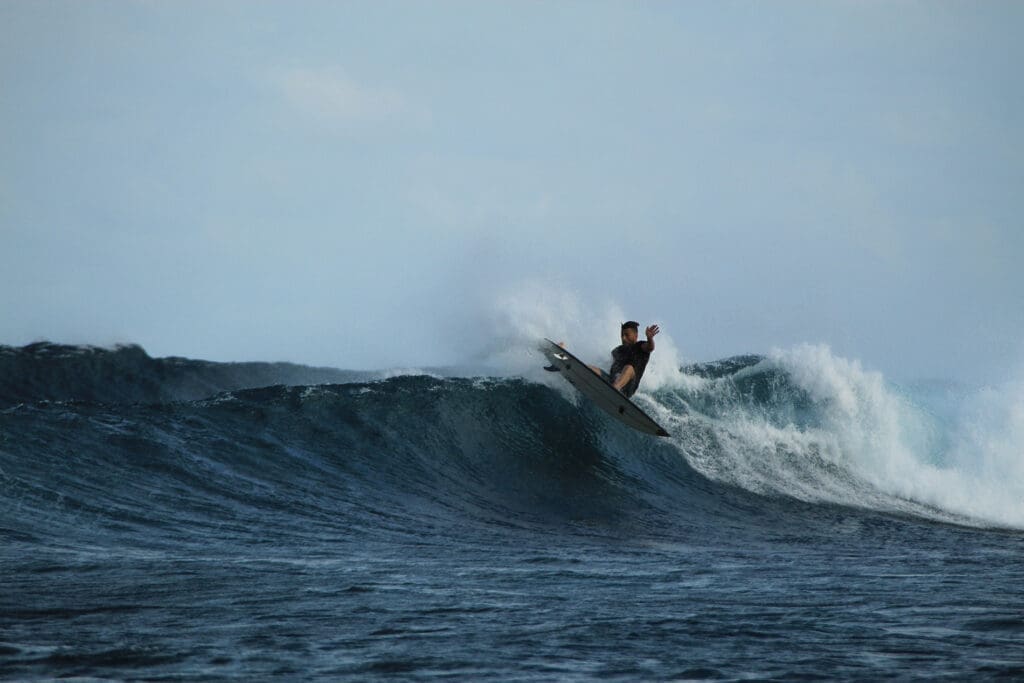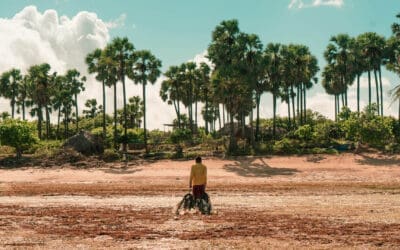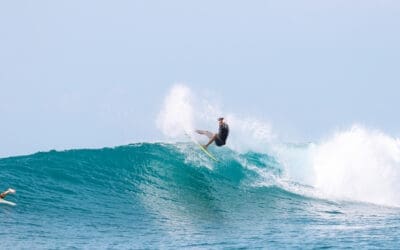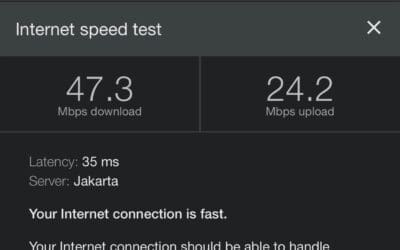Picking out a new board before a trip or talking to your shaper about your brand new custom is one of the best feelings in life for a surfer. But at the same time, with so many surfboard shapes out there, choosing the right one for you can be one of life’s tougher decisions.
Going into the same shop 4 times in 4 days to pick up and hold the same board, just to make sure it feels right while you weigh up the cost benefit. We’ve all done it right?
Having surfed for over 20+ years across all continents (except Antarctica), from Hawaii’s North Shore to a river in Slovenia, I’ve owned, borrowed or demoed surfboards of all types, shapes and sizes, growing a problematically large collection of boards spread around friends garages all around the world.
So in this comprehensive guide to surfboard shapes we are going to explore the various surfboard types, shapes characteristics, along with their suitability for different skill levels and wave conditions. I will also share some of our favorites and what we have been riding here in Rote.
So let’s get into everything you need to know about surfboard shapes.
[ez-toc]
Longboards
Longboard surfboards have been around for centuries, dating back to the early days of surfing. Ancient tribes used long, flat wooden boards to catch waves, laying the foundation for the sport we know today. While the materials and shapes have evolved over time, the essence of longboarding remains unchanged.
The longboards we see today gained popularity in the 1960s, becoming synonymous with the surfing culture. Modern longboards are designed to cater to various surfing styles, from beginner-friendly to performance-oriented.
Key Characteristics of Longboards
- Length: Typically between 9 and 10 feet.
- Shape: Thick rails and a larger central fin.
- Paddling Ease: The extra length and volume makes paddling effortless.
- Wave-Catching Ability: Ideal for small, less powerful waves and can catch anything!
- Riding Style: Requires a different technique compared to shortboards, and a VERY different technique if you want to be half stylish.
Types of Longboards
- Malibu Longboard: The classic, traditional shape with a rounded nose and wide tail.
- Nose Rider Longboard: Features a refined bottom to improve nose riding performance.
Longboarding has experienced a resurgence in recent years, with many surfers embracing its unique style, gaining massive popularity around the world. Places like Batukaras in Java have become globally famous in the logger community, for longboard waves and produces some of the worlds most stylish longboarders.
Whether you’re a beginner or an experienced surfer, a longboard has a place in every quiver. Its versatility, ease of paddling, and classic style make it a popular choice for surfers of all ages and skill levels.
Our Favorite Longboards:
Shortboard
Shortboards have undergone a dramatic transformation in recent years, driven by the growing popularity of surfing and the demand for innovative designs. Gone are the days of simple three-fin setups and subtle tail changes. Modern shortboards feature a variety of rocker lines, profiles, tails, and fin systems, pushing the boundaries of performance and surfing.
Performance-Oriented Design
Shortboards are designed for intermediate and advanced surfers seeking a smaller board that allows for faster and tighter turns. While the shorter length may make the pop-up slightly more challenging, it rewards surfers with the ability to cut back into the critical section of the wave with ease.
The world of shortboards is constantly evolving, with new shapes and designs being released regularly. Many of the world’s leading shapers collaborate with professional surfers to create cutting-edge models that push the limits of performance.
Choosing the Right Shortboard
Selecting the perfect shortboard can be a complex process. Consider your surfing frequency, location, and skill level when making your decision. With a wide range of shapes, tails, and fin setups available, there’s a shortboard out there to suit every surfer’s needs.
Key Considerations
- Shape: Different shapes offer varying levels of performance and maneuverability.
- Tail: The tail design can impact the board’s turning characteristics.
- Fin Setup: Choose a fin setup that suits your surfing style and wave conditions.
- Construction: Consider the materials and construction techniques used in the board.
Getting Expert Advice
If you’re unsure which shortboard is right for you, consult with a knowledgeable surfboard shop. They can provide personalized recommendations based on your individual needs and preferences. There’s nothing worse than spending your hard earn savings on a board that really doesn’t work for you.
Some of Our Favorite Shortboards:

Fish
Fish surfboards have been a staple in the surfing world for decades, first gaining popularity in the late ’70s and early ’80s. Today, they’re available in a variety of styles, each with its own unique characteristics, but all sharing a similar riding feel. Modern fish surfboard shapes have evolved with new rocker lines and fin options, including four and five fin setups.
Fish surfboards are known for their speed, looseness, in less than stellar. They’re a great choice for surfers looking to add a fun and dynamic board to their quiver.
Fish surfboards are alsoideal for surfers transitioning from longer boards to smaller ones as their flat, fast nature makes them easier to paddle and catch waves, while still allowing for plenty of turns, maneuvers and progression.
Speed and Maneuverability
Fish surfboards are naturally fast, helping intermediate surfers improve their wave speed. The traditional two-fin setup works well in most waves, but modern fish boards often feature more fin options for added versatility.
The swallow tail design of fish boards provides ample volume, making them easy to paddle and offering good drive in smaller waves. This versatility has made fish boards a popular choice among surfers of all levels.
If you’re looking for a fun, versatile, and stylish board, a fish surfboard is definitely worth considering.
Some of Our Favourite Fish Surfboards
Groveler
Grovelers are specifically designed surfboards that excel in smaller, weaker waves, typically from knee to shoulder high. These surfboard shapes are packed with features that make them easy to paddle, catch waves, and generate speed, even in challenging conditions.
The Groveler Advantage
Unlike longer boards that can be difficult to turn in small waves, grovelers carry more foam in a much shorter length board, meaning you can float through flatter weaker sections with ease while still maintaining maneuverability. Shapers have cleverly combined volume and length to create boards that are easy to paddle while still retaining their ability to turn and generate speed in poor conditions.
Key Characteristics of Grovelers
- Volume: Packed with volume for easy paddling.
- Length: Relatively short for maneuverability.
- Rocker: Flat rocker with a slight nose and tail rocker for enhanced paddling and speed.
- Wide Point: Forward-placed wide point for easier paddling.
- Concave: Decent amount of concave for lift and speed generation.
- Fin Setup: Often 5-fin setups for versatility.
Choosing the Right Groveler
When selecting a groveler, consider your size, ability, and the waves you’ll be surfing. Different models may excel in specific conditions, such as extremely weak waves or slightly larger waves.
Our favorite Groveler Surfboards

With the right groveler, you can have a blast in any wave conditions. So don’t let small waves hold you back, grab a groveler and go surf.
Twin Fins
Similar to tradiional fish surfboard shapes, twin fins have only 2 fins.
Twin fin surfboards have made a comeback, offering a unique and fun ride that’s perfect for surfers who want to inject some creativity and looseness into their sessions, and many shapers now have performance twin fin surfboard sin their range. If you’re tired of the same old thruster, twin fins are a great addition to any quiver.
Once considered a retro novelty, twin fins have evolved into high performance machines. Their unique design offers a refreshing change, delivering speed, style, and maneuverability that’s hard to beat.
Twin fins are ideal for small to medium waves, allowing you to flow effortlessly through flat sections and less than prime conditions easily. Their loose feel encourages allows for expression and experimentation, so you can really let put some flare into your surfing.
But that absolutely does not mean they don’t work in bigger surf. Just take a look at the opening waves of Jack Johns riding the Revolution Twin by Jim Banks at HTs if you need some proof. Modern twin fins combine classic design elements with contemporary features, such as continuous rockers and pinched rails. This ensures they can still handle tighter turns when the surf picks up, offering a versatile and enjoyable riding experience.
A Must-Have for Any Surfer
The combination of retro-inspired vibes and modern performance means a twin fin surfboard is a valuable addition to any surfer’s quiver.
Our favorite Twin Fin Surfboards
Mid Length
A mid-length surfboard sits between a longboard and a shortboard, combining the best features of both. It offers excellent paddling and wave-catching abilities while maintaining the ability to turn and maneuver more effectively than a traditional longboard surfboard shapes.
Mid-length boards have gained popularity in recent years due to their versatility and practicality. They offer a balance between stability and performance, making them suitable for a wide range of surfers, from beginners to intermediates.
Key Features of Mid-Length Surfboards
- Length: Typically range from 6’6″ to 8’0″, though this can vary.
- Shape: Blend of longboard and shortboard characteristics.
- Fin Setup: Often feature a 2+1 or 4+1 fin arrangement for stability and drive.
- Wave Range: Can handle waves from knee-high to overhead.
- Versatility: Suitable for various surfing styles and conditions.
Why Choose a Mid-Length?
- Maximize Wave Count: Mid-length boards allow you to catch more waves, especially in less-than-ideal conditions.
- Enjoyable Riding: They offer a fun and engaging surfing experience.
- Versatility: Suitable for a wide range of surfers and wave conditions.
- Easy to Paddle: Their length and shape make them easy to paddle and catch waves.
Some of Our Favorite Mid Lengths
Gun
Gun surfboards are designed to conquer the most massive waves on the planet and most people will live their lives happily never owning one of them. That includes me! I might hand one on the wall one day but thats as far as that’s going.
These specialized boards are built for expert surfers (or madmen) who are ready to take on the challenges of 20ft plus waves.
Key Features of Gun Surfboards
- Length: Typically 9 feet or longer, providing extra stability and paddle power.
- Shape: Narrower and much longer than standard shortboards, with a pulled-in tail for control.
- Tail: Normally a pin tail or narrow swallow tail for added stability and drive.
- Construction: Built with very heavy glass and extra wide springer to withstand the immense forces of big waves.
- Fin Setup: Thruster for more control or quads for pure speed.
Our Favorite Guns (Just for Looking At Online)
Step Up
Step-up surfboards are designed for when your standard shortboard isn’t cutting it in larger waves. If you find yourself struggling to paddle into or control bigger sets, a step-up is essential.
Key Features of Step-Up Boards
- Rounded Pin Tail: Provides better control in powerful waves.
- Narrower Shape: Offers more stability and control.
- Straighter Rails: Enhance paddling power and stability.
- Extra Length: Generates more paddle speed for catching bigger waves.
- Extra Volume: Improves wave-catching ability without sacrificing rail setting.
Step-up boards prioritize power and control over tight turns. These surfboard shapes design is all about getting you into and to the end of solid waves.
If you’re looking to tackle bigger waves at home or abroad, a step-up surfboard is a must-have. With its ability to hold a line in critical sections, and wave-catching capabilities, it’ll give you the confidence to charge into any swell.
Our favorite Step-Up Models




























